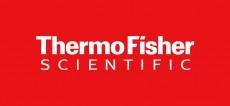EMA Biosimilars Draft: Non-EU Reference Avoids Clinical Trial Repeats

The draft is a revision of the agency’s 2005 guidelines on similar biological medicines and intends to describe and address the application of the biosimilar approach, the choice of the reference product and the principles of establishing biosimilarity.
Defined as a biological medicinal product that contains a version of the active substance of an already authorised original biological medicinal product (a reference), a biosimilar has, according to the guidance, a resemblance reliant on “quality characteristics, biological activity, safety and efficacy.”
“The success of developing a biosimilar will depend on the ability to produce a close copy to the reference medicinal product and demonstrate the similar nature of the concerned products” and therefore the standard generic approach is not appropriate.
Instead the draft talks of the ‘biosimilar’ approach which it describes as being “based on a comprehensive comparability exercise” and more difficult to apply, due to the impact of changes biologics undergo in the manufacturing process.
One thing the guidance does make clear is the reference product – used as the counterpart throughout the development and manufacture of the biosimilar - needs to be a single comparator throughout the process and have been authorized in the EEA (European Economic Area).
However, the guidance concedes that under certain conditions a comparative product authorized in a non-EEA country by a regulatory body with similar standards to the EMA could be used in order “to avoid unnecessary repetition of clinical trials.”
“The ultimate goal of the comparability exercise is to exclude any relevant differences between the biosimilar and the reference medicinal product,” the guidelines conclude. “Studies should be sensitive enough with regard to design, population, endpoints and conduct to detect such differences.”
Last year the US Food and Drug Administration (FDA) released its thinking on biosimilars under pressure from industry. It conceded that differences between the biosimilar and its reference could be acceptable if it is deemed ‘highly similar,’ even with minor differences in its use of excipients.
The EMA has opened the guidance up to the industry for comment until the end of October 2013.












